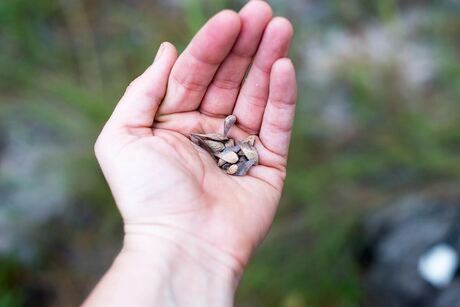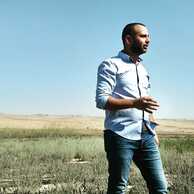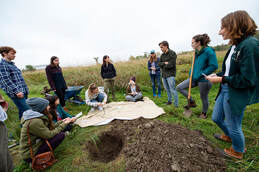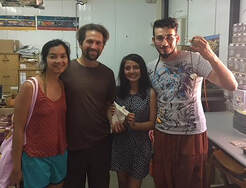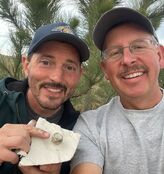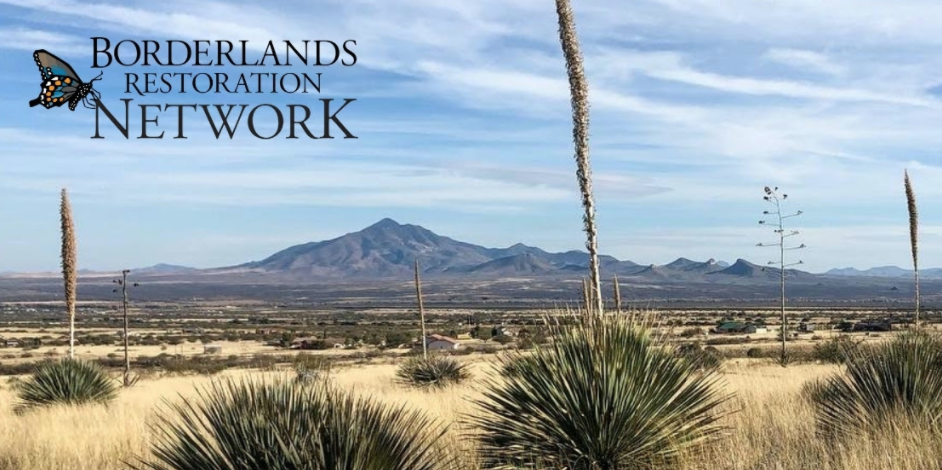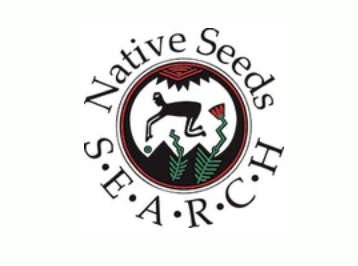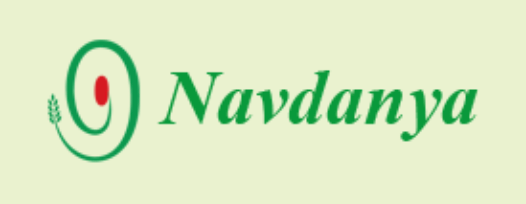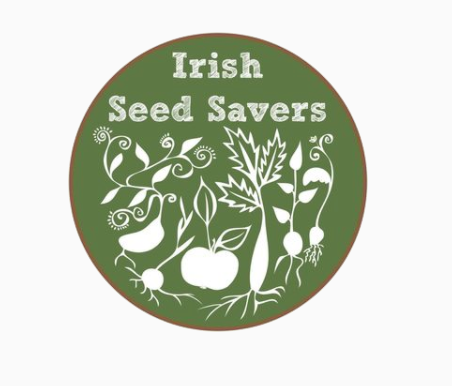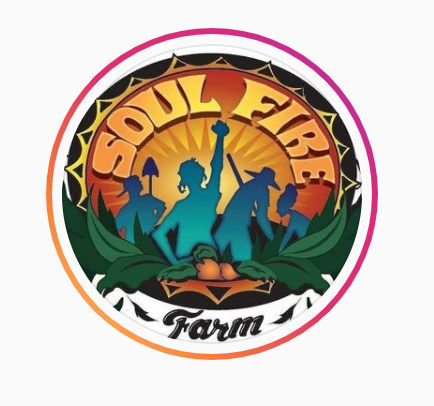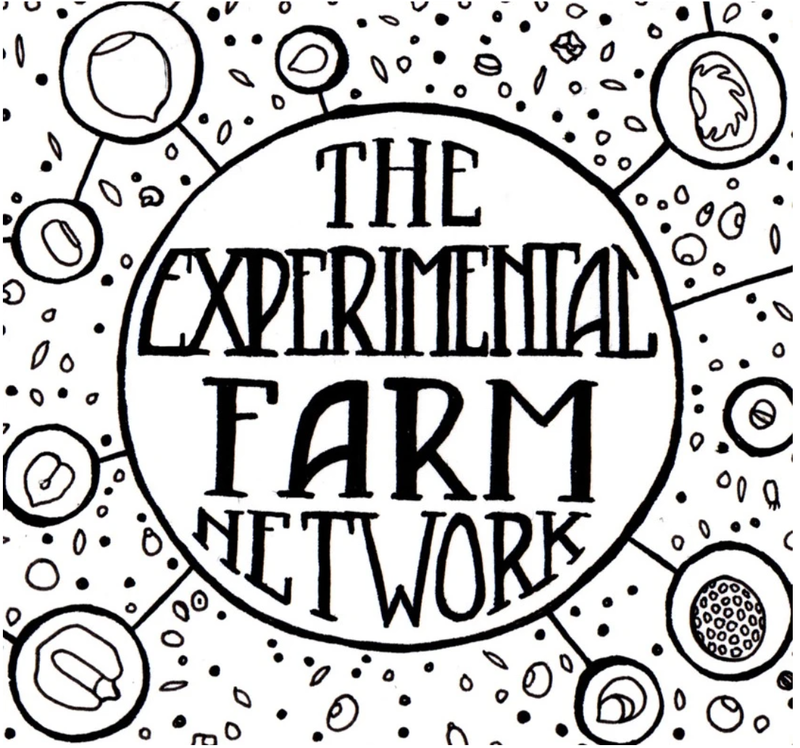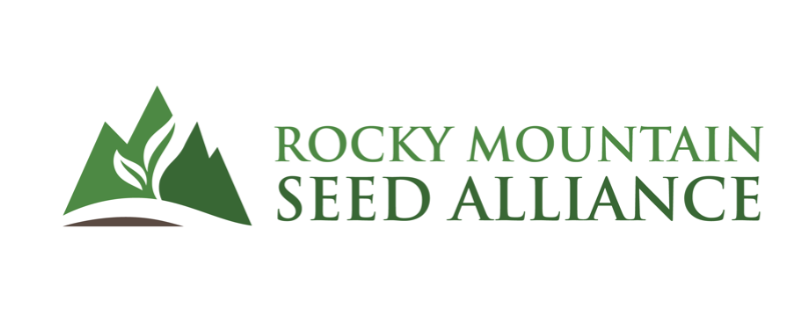Purpose.
(from left to right) 1. Amran Amari of Project Wadi Attir discusses the ecological rehabilitation efforts done to restore a section of the Negev Dessert. He uses a seed bank to explain seed saving efforts in the education program. Image courtesy of R.Jones. 2. Founder, Rachael Jones assists Professor Kate Cleary's Agro-ecology class in burying seeds collected from participating North Country New York Local farmers at the sustainability Lab at St. Lawrence University. Photo Courtesy of Tara Freeman. 3. Carlie Dario, Lee Goldwater, Shweta Adhikari & Edrian Lozano, of the 2018 Global sustainability Cohort, bury seeds provided by Agro-botonist Elaine Solowey at the Arava Institute for Ecological Studies. Photo courtesy of Rachael Jones. 4. Dru Demato & Michael Willing bury bank XXVII in Sheridan, Montana containing Golden Rod Seeds. Photo Courtesy of Demato & Willing.
Founded in 2017, The Seed Bank Project honors the perspectives of individuals and their connections to specific regional lands and regional plants. Part of the mission is to create artwork that is accessible beyond the gallery, putting local voices and the community first. The socially engaged collaboration between the artist and the community also builds platforms for ecological engagement via a three-tiered process: physical, reflective/data, and online resources. The process of burying handmade seed banks (made by Rachael Jones) builds a physical connection between participants, creative intention, and ecological curiosities and awareness. In selecting plants, participants consider both the geographical location and the cultural or regional significance of the plant type in relation to their personal or cultural connections. These plants must either be indigenous or have an acclimated, agricultural presence in the local environment. The public online database is written by collaborators who buried the seed bank and is accessible to all. Collaborators provide the GPS location (which is not shared publicly; only a general location is used for the pin), a photograph of the chosen plant, and a short synopsis of the plant's cultural and ecological significance. Ultimately, and when faced with generalized global resistance to slowing or reversing climate change by means of political cooperation, burying the seeds and sharing collaborators' stories are radical acts of hope.
Participation is voluntary, and no monetary exchange is required. However, participants can choose to donate funds to their chosen seed-saving organization listed below. The exchange model is loosely based on barter culture: a hand-made, slip-cast, double-walled seed bank is shipped to the participant with instructions, and in return, the participant performs the act of burying the bank and provides the research on the chosen plant’s ecological and cultural significance, which is then submitted to be cataloged in the public database.
-R.Jones, Studio Potter Magazine
Link to article here: https://studiopotter.org/seeding-hope-future
Participation is voluntary, and no monetary exchange is required. However, participants can choose to donate funds to their chosen seed-saving organization listed below. The exchange model is loosely based on barter culture: a hand-made, slip-cast, double-walled seed bank is shipped to the participant with instructions, and in return, the participant performs the act of burying the bank and provides the research on the chosen plant’s ecological and cultural significance, which is then submitted to be cataloged in the public database.
-R.Jones, Studio Potter Magazine
Link to article here: https://studiopotter.org/seeding-hope-future
Where Seed Banks have been buried:
|
|
Here is a map of all the seed banks that have been sent out and buried.
Please note that marker locations are approximate, and the map is updated weekly. All information is posted as given to me by the wonderful people who have participated in the project. If you do not see your bank yet, or all the information is not yet visible don't worry! The map will be updated soon! Note: Many of the banks have been sent out, but not buried yet due to weather restrictions. Their information will be recorded as soon as they are buried. |
The Seed Bank's Designs:
When designing the banks, I decided to look to ecological design methods that created a symbiotic connection to its’ surroundings, and maintained its autonomy from human maintenance. Each bank is designed to prolong the viability of the seeds through the careful consideration of using the thermal mass of the earth (much like the architectural Earthship movement), trapping a layer of air between two porcelain walls to maintain a constant temperature below the permafrost ground level, and each bank is sealed with beeswax to maintain a constant air tight, water tight environment. Although the environment to promote the viability of the seeds has been considered in the design of the banks, each seed has its own unique life span that genetically determines its viability, and thus not all seeds will remain viable. The hope is that if ever found beyond its span of viability, the seed’s DNA can still provide cultural significance about the ecology of the place in which it was found. |
How They Are Made:
|
|
|
|
I slip-cast both the exterior casing (the rock form) and the interior seed tube separately using plaster molds and slip (liquid, deflocculated clay). The cap for the seed tube was cast from a custom tap that I had made by a local machining company in Bozeman, Montana. While the interior seed tube is still in the mold, I use the tap to form the threads that align with the cap by carefully twisting the tap into the interior walls of the opening of the seed tube. Once all the parts are pulled out of the mold, I allow them to sit in a damp box (a plastic container with a hydrated plaster floor) overnight. The next day, I cut a hole in the rock casing, insert the seed vessel tub within, and clean up the connection point. The last step is to poke a small hole in the rock casing (to avoid explosions in the kiln), dust the cap with alumina hydrate, and screw the cap into place. The piece then gets once-fired to about cone five. Firing the cap screwed into place prevents any warping in the kiln and ensures a snug fit, while the alumina hydrate keeps the cap from possibly getting stuck during the vitrification of the porcelain. After the piece has been fired, I seal the small air-release hole with beeswax, gently unscrew the cap, coat the top rows of thread with beeswax, and recap, and the seed bank vessel is ready to send to collaborators.-R. Jones, Studio Potter Magazine
Resources for Thoughtfully Harvesting and Preparing Seeds for Saving
|
HOW TO SAVE SEEDS:
|
Seed Savers Organization- How to Store Seeds
Montana State University- Harvesting & Saving Seeds (PDF)
THE PHILOSOPHIES & STORIES OF SEED SAVING:
"Lakota Organic Growers Embrace Food Sovereignty in Times of Drought & Scarcity". Aliyah Keuthan. Native Land Information System. January 24, 2023.
Vandana Shiva: Seeds of Hope. 2015
"Ancient Date Palm". Sallon, S. Solowey, E., Arava Institute for Ecological Studies.
PLANT IDENTIFICATION RESOURCES:
Guidelines for Planting The Seed Banks:
Step 1: Choosing your Seeds and the location, and filling the Seed bank
2. Consider using plants that provide sustenance or habitat to living creatures within that ecology, such as berries or seed pods of trees/grasses that provide a safe-haven for birds or animals beyond just human consumption. Often times, these seeds will also benefit humans, but focusing on the ecological system as a whole is the goal. 3. Agricultural seeds can be an interesting indicator of human’s ability to co-exist and thrive within their environment. Please consider seeds that promote a sustainable, and ecologically sound farming practice. Perhaps some research on indigenous farming practices could direct you to some interesting heirloom plant varieties, or seeds that have been raised in your area for generations, thus naturally adapting their DNA to adjust to the climate in which you, and they exist. Step 3: Determining the Depth of the holeDepending on which climate you are in, you will have to research the permafrost level of your area to determine the depth of your hole. Generally, you will want to bury the bank as far down as you would bury a water pipe in your area.
Check for permafrost here: https://nsidc.org/cryosphere/frozenground/whereis_fg.html Generally, it will be the same depth at which water pipes are buried into the ground. You will want to bury the bank at least 6" below the permafrost level. Once you have determined the depth of your whole, begin digging! When you begin to dig your hole, cut out a circle with your shovel to preserve the vegetation. Cut this out gently and set aside to replace later. This will ensure that the vegatation can regenerate it's roots, and leave as little of a trace as possible. Gently lower your seed bank down to the bottom, and put the chain to the side. Begin to fill the hole back in with dirt, gently tamping down the dirt with a shovel or your foot (try not to stomp the seed bank!). Once you have the hole mostly filled, check to make sure that you still have the indicator rock at the surface. Have someone hold onto this, as you replace the top 4" of vegetation that you cut out, and set aside when you began to dig your hole. If possible, water the vegetation, and the area you dug thoroughly to tamp the dirt further, and provide relief for the vegetation. |

Step 2: Filling & Sealing The Seed BankHarvest enough seeds that the smaller, inner chamber of your bank is full but not crammed. Allow the seeds some space to move around a bit. Make sure that you don't harvest all the seeds, leave enough on the plant to ensure survival for the following spring. Proper harvesting techniques and plant identification information can be found in the links above! Once you have filled your bank with seeds, use a lighter to heat up the bees wax around the top of the screw top to ensure an airtight/water tight seal. Screw the topper in while the wax is still soft and then gently run a flame around the outside of where the topper and the lip of the bank meet to ensure the wax melts to create a good seal. Allow to cool for 5 minutes before you bury your bank (this is a great time to start digging your hole!) See Step 3 for determining the depth of your hole. Step 4: Documentation and Researching your chosen Seeds stand on top of the hole you just dug and use the compass app on your phone, or a GPS device to get the GPS coordinates of the bank. (I have downloaded the compass app on my iphone and then screen shot the coordinates to record later. You may have to turn roaming on for a minute to get service in some locations).
Be sure to get photo documentation of the seeds, the plant in which you harvested them from, and then a few shots of the surrounding area (taking a panoramic shot while standing on the hole is a great idea!) Also, video footage of harvesting seeds, digging the whole and choosing the plant would be greatly appreciated! When you get home, fill out the included sheet of information to send back to me at: rachaelmarnejones@gmail.com A link to the document can be found here: |
The Future of the Seed Banks
Often, people ask me, "What is to become of the seed banks [after they are buried]? What if no one finds them?" It excites me that the project elicits such curious responses and provides an opportunity to look inward and forward. I tell them that it's ok with me if they don’t get found because much of the inspiration for this project is about letting go of control, allowing yourself to get curious, researching what you can, but ultimately being ok with an unknown result and valuing the experience and lessons learned. This is something clay continues to teach me over and over again. The experience preparing these seed banks offers is for this generation, while the actual banks and seeds inside them are for future generations to discover. The project is meant to build bridges of connection in the present between myself, my collaborators, and their local ecologies, and, more broadly, to build a global connection of people who care about keeping the stories of the seeds alive. The actual banks in the ground exist on many levels – physically, yes, but also as a symbol of the unknown and a deep reverence for hope. It is my dream to prioritize and uplift the multi-generational and cooperative outlook that many Indigenous cultures utilize when practicing land stewardship. This is such an important and necessary perspective to seed in the next generation of land stewards. -R.Jones The Studio Potter Magazine
Ready To Collaborate?
Giving Back: Suggested Organizations to donate to for participation
I often get the question, "How much does a seed bank cost?" The actual cost of a seed bank (in labor, materials and shipping) is around $80-100 depending on where I need to ship them. I envisioned this project to be widely accessible to whoever wanted to participate and was willing to put in the time and dedication to research and bury the banks without money being a factor within the exchange (hello barter markets!)
My thought was that the information about your relationship to the seeds, and their relationship to their local ecology that you returned to me for the data base, as well as the sweat that you put into digging a (sometimes very large!) hole was "payment" in exchange for my labor making the object. Together, our actions coalesce to create the beautiful cultural and ecological marker, saving the seeds of your choice!
BUT! That being said, if you are in a place of financial privilege and are willing to reallocate financial resources, then I would love to point you to some grassroots organizations that are doing some AMAZING work to continue the legacy of some very important seeds and fragile ecosystems around the world. How much you donate is up to you, and if you would like, I would encourage you to email me a receipt of your donation (just for The Seed Bank Project's records, individual donation amounts will not be made public) at rachaelmarnejones@gmail.com.
If you know of an organization that should be included on this list, please send me an email with their info!
ORGANIZATIONS THAT COULD BENEFIT FROM YOUR GENEROUS DONATION(S)/RE-ALLOCATIONS:
My thought was that the information about your relationship to the seeds, and their relationship to their local ecology that you returned to me for the data base, as well as the sweat that you put into digging a (sometimes very large!) hole was "payment" in exchange for my labor making the object. Together, our actions coalesce to create the beautiful cultural and ecological marker, saving the seeds of your choice!
BUT! That being said, if you are in a place of financial privilege and are willing to reallocate financial resources, then I would love to point you to some grassroots organizations that are doing some AMAZING work to continue the legacy of some very important seeds and fragile ecosystems around the world. How much you donate is up to you, and if you would like, I would encourage you to email me a receipt of your donation (just for The Seed Bank Project's records, individual donation amounts will not be made public) at rachaelmarnejones@gmail.com.
If you know of an organization that should be included on this list, please send me an email with their info!
ORGANIZATIONS THAT COULD BENEFIT FROM YOUR GENEROUS DONATION(S)/RE-ALLOCATIONS:
"The Problem of sustainability is simple enough, it requires that the fertility cycle- birth, growth, death and decay, must turn continuously in place- that the law of return is kept, and nothing is is wasted. For this to happen in the stewardship of humans, there must be a cultural cycle in harmony with the fertility cycle, also turning continuously in place.
The cultural cycle is an unending conversation: old people and young people assuring the survival of local memory, which as, long as it remains local, has the greatest practical urgency and value.
This is what is meant in all that can be meant by sustainability.
The fertility cycle turns by the laws of nature, the cultural cycle turns on affection."
The cultural cycle is an unending conversation: old people and young people assuring the survival of local memory, which as, long as it remains local, has the greatest practical urgency and value.
This is what is meant in all that can be meant by sustainability.
The fertility cycle turns by the laws of nature, the cultural cycle turns on affection."

